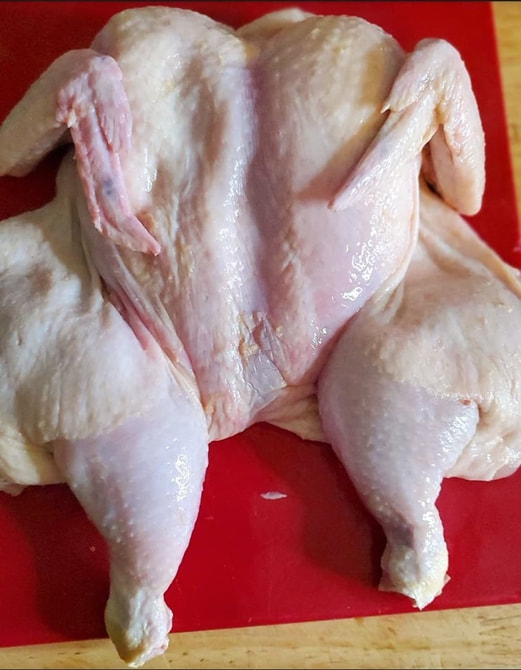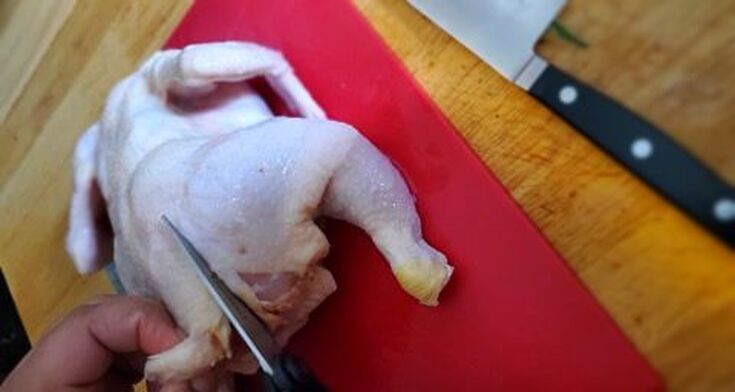Looking to cut down on some cooking time? Consider butterflying your chicken by following these easy steps.I don't know too many people who enjoy waiting for food to cook when they're hungry. If you have a pulse, all of us encountered a day or two where we've babysat an oven waiting for the meal to magically float into our mouths. If it's a chicken, quail, Cornish hen, turkey or anything of that nature, I got you covered. To spatchcock a chicken - or most birds - is much simpler than you think And if you are wondering what the hell spatchcock even means, it is the act of butterflying a whole bird and removing the backbone. If you watched enough of my Instagram or Facebook stories, I've done it dozens of times right before sectioning off an entire chicken. Benefits of Spatchcocking a Chicken
Why You May NOT Want to Spatchcock your Chicken
Personally, I prefer to spatchcock a chicken with my chef blade but most people prefer kitchen shears. For educational purposes, I'll break down both ways to go about it. Spatchcock (or Butterfly) Your Chicken with Kitchen Shears
Spatchcock (or Butterfly) Your Chicken with a Chef's Blade
Frequently Asked Questions and What's Next?
Spatchcock isn't just a funny word anymore. Apply this technique to your next poultry dish and watch the magic happen.
1 Comment
7/22/2024 11:24:12
Wow, this is really interesting reading. I am glad I found this and got to read it. Great job on this content. I like it.
Reply
Leave a Reply. |
Latoya Shauntay SnellThanks to friends and loved ones, I managed to financially foot part of the bill for some fancy classically French training school called Star Career Academy of NY before the school ran off and stole everyone's money. At least the instructors were real deal and I graduated before they closed. If you want to donate to my one woman operation, please feel free to hit the button below.
Archives
May 2020
|


 RSS Feed
RSS Feed